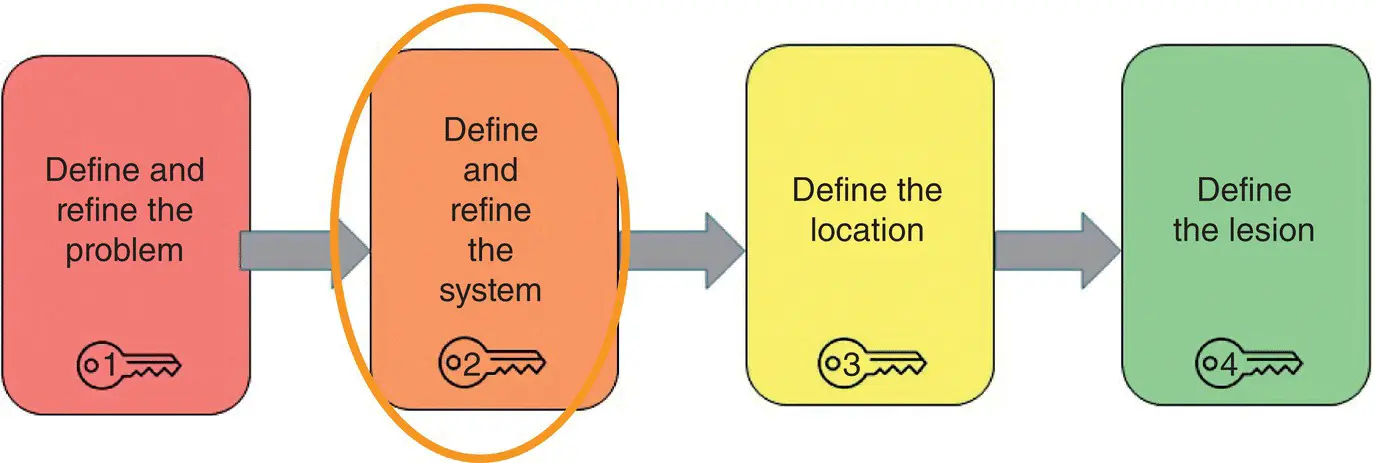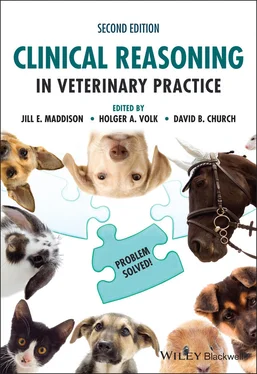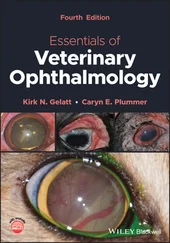Clinical Reasoning in Veterinary Practice
Здесь есть возможность читать онлайн «Clinical Reasoning in Veterinary Practice» — ознакомительный отрывок электронной книги совершенно бесплатно, а после прочтения отрывка купить полную версию. В некоторых случаях можно слушать аудио, скачать через торрент в формате fb2 и присутствует краткое содержание. Жанр: unrecognised, на английском языке. Описание произведения, (предисловие) а так же отзывы посетителей доступны на портале библиотеки ЛибКат.
- Название:Clinical Reasoning in Veterinary Practice
- Автор:
- Жанр:
- Год:неизвестен
- ISBN:нет данных
- Рейтинг книги:3 / 5. Голосов: 1
-
Избранное:Добавить в избранное
- Отзывы:
-
Ваша оценка:
- 60
- 1
- 2
- 3
- 4
- 5
Clinical Reasoning in Veterinary Practice: краткое содержание, описание и аннотация
Предлагаем к чтению аннотацию, описание, краткое содержание или предисловие (зависит от того, что написал сам автор книги «Clinical Reasoning in Veterinary Practice»). Если вы не нашли необходимую информацию о книге — напишите в комментариях, мы постараемся отыскать её.
Clinical Reasoning in Veterinary Practice: Problem Solved! 2nd Edition
Clinical Reasoning in Veterinary Practice: Problem Solved! 2nd Edition
Clinical Reasoning in Veterinary Practice — читать онлайн ознакомительный отрывок
Ниже представлен текст книги, разбитый по страницам. Система сохранения места последней прочитанной страницы, позволяет с удобством читать онлайн бесплатно книгу «Clinical Reasoning in Veterinary Practice», без необходимости каждый раз заново искать на чём Вы остановились. Поставьте закладку, и сможете в любой момент перейти на страницу, на которой закончили чтение.
Интервал:
Закладка:
When considering the important clinical signs the patient is exhibiting, it is essential to try to define the problem as accurately as possible. A problem well defined is a problem half solved is a good maxim to work from.
The first question to ask is, Is there another clinical sign that this problem could be confused with? This is a vital step, and failure to define the problem correctly has often derailed a clinical investigation that might otherwise have been relatively straightforward.
Other examples include the following:
The owner says the dog is having fits – is it having seizures, episodes of syncope or vestibular attacks or other strange episodes? ( Chapter 8)
The owner says the dog has red urine – is it blood, haemoglobin or myoglobin? ( Chapter 12)
Refine the problem
Some (but not all) problems require further refining to clarify the best diagnostic approach.
Examples include the following:
Weight loss – is this because of inappetence or despite a normal appetite? ( Chapter 5)
Collapse – with or without loss of consciousness? ( Chapters 7and 8)
Why is it so important to define and refine the problem?
The range of diagnoses to consider, diagnostic tools used and potential treatment or management options for clinical problems that may be perceived by the owner to be the same and present similarly to the veterinarian can be very different. Or the owner might perceive the presenting signs to be attributable to one problem, but in reality, the signs indicate another problem to the veterinarian.
Failure to appropriately define and/or refine the problem can often lead to wasted time and money, as the wrong problem is investigated or treated.
This may:
Delay reaching a feasible diagnosis
Delay treatment
Prolong the disease
Prolong the patient’s suffering
Sometimes potentially endanger the life of the patient
Unnecessarily increase the costs to the client
Frustrate the veterinarian and client
Potentially impair the client–veterinarian relationship.
 Define and refine the system
Define and refine the system

Figure 2.4 Clinical reasoning step‐by‐step: define and refine the system.
Once the problem is defined, the next step is usually to consider the system involved ( Figure 2.4). For every clinical sign, there is a system(s) that must be involved, that is it ‘creates’ the clinical sign – this is what is meant by defining the system. However, the really important question is, How is it involved? This is refining the system. The key questions in this case are What system is involved in causing this clinical sign? (define the system), and Do I have a primary, that is, structural problem of a body system, or a secondary problem, that is, functional problem where the system involved is affected by other factors? (refine the system).
| Key concept | |
|---|---|
| Define the system | For every clinical sign, identify the system that must be involved. |
| Refine the system | For every defined system, determine how the system is affected – primary (structural) or secondary (functional) or, for some problems, local vs systemic. |
Examples include the following:
The body system always involved when a patient vomits is the gastrointestinal (GI) system (define the system).However, it may be directly involved due to primary pathology of the gut, such as parasites, inflammation, neoplasia and foreign body. The system is thus refined as primary (structural) GI disease.Or vomiting may be occurring due to dysfunction of non‐GI organs, such as the liver, kidney, adrenal glands and/or pancreas. The system is thus refined as secondary (functional) GI disease.
The body system that is always involved when a patient has generalised weakness is the neurological/neuromuscular system (define the system).However, in refining the system, it may be directly involved due to primary neurological/neuromuscular pathology (e.g. inflammation, toxins, neoplasia and infection).Or the neurological/neuromuscular system may be malfunctioning due to the effect of pathology on other organs, causing metabolic derangements that impair neurological/neuromuscular function, such as hypoglycaemia, anaemia, hypoxia and electrolyte disturbances. This is thus refined as secondary neurological/neuromuscular disease.
Why is it so important to define and refine the system?
The range of diagnoses to consider, diagnostic tools used and potential treatment or management options for primary, structural problems of a body system are often very different compared to those relevant to secondary, functional problems of that system.
Investigation of primary, structural problems often involves imaging the system in some manner (radiology, ultrasound, advanced trans‐sectional imaging, endoscopy and surgery) and/or biopsy. Routine haematology, biochemistry and urinalysis are often of little diagnostic value. For secondary, functional disorders, on the other hand, haematology and biochemistry are often critically important in progressing our understanding of the case and reaching a diagnosis.
Failure to consider what body system is involved ( define the system ) and how it is involved ( refine the system ) can often lead to wasted time and money. This can delay treatment, prolong the disease, prolong the patient’s suffering, sometimes potentially endanger the life of the patient, and may increase unnecessarily the costs to the client, frustrate the vet and client and potentially impair the relationship between vet and client. (Notice a recurring theme here?)
In fact, if you do nothing else when assessing a case before seeking the diagnostic ‘pattern’, ask yourself for each of the specific problems, What system could be involved (i.e. define the system), and how – primarily or secondarily? (i.e. refine the system). This simple question will immediately open your mind to diagnostic possibilities you may never have contemplated if you were just focusing on the ‘pattern’.
Other examples include the following:
Chronic cough – cardiac or respiratory system? ( Chapter 9)
Jaundice – due to a haemopoietic (haemolysis) or hepatobiliary disorder? ( Chapter 11)
Cardiac arrhythmia – is it due to primary (structural) cardiac disease – for example, dilated cardiomyopathy? Or extra‐cardiac disease – for example, gastric dilation and volvulus, splenic pathology? ( Chapter 7)
PU/PD – is it due to primary polydipsia (the patient wants to drink) or primary polyuria (the patient has to drink)?If due to primary polyuria – is this because of primary (structural) renal disease (e.g. chronic kidney disease) or extra‐renal dysfunction, for example, diabetes mellitus, hypercalcaemia and hypoadrenocorticism? ( Chapter 13)
An alternative, although closely related, question for some problems is, Is the problem local or systemic?
Epistaxis – due to local nasal disease or systemic disease – for example, coagulopathy and hyperviscosity? ( Chapter 12)
Melaena – GI bleeding due to local disease (ulceration – which in turn may be due to primary or secondary GI disease) or systemic disease, for example, coagulopathy? ( Chapter 12)
Читать дальшеИнтервал:
Закладка:
Похожие книги на «Clinical Reasoning in Veterinary Practice»
Представляем Вашему вниманию похожие книги на «Clinical Reasoning in Veterinary Practice» списком для выбора. Мы отобрали схожую по названию и смыслу литературу в надежде предоставить читателям больше вариантов отыскать новые, интересные, ещё непрочитанные произведения.
Обсуждение, отзывы о книге «Clinical Reasoning in Veterinary Practice» и просто собственные мнения читателей. Оставьте ваши комментарии, напишите, что Вы думаете о произведении, его смысле или главных героях. Укажите что конкретно понравилось, а что нет, и почему Вы так считаете.












